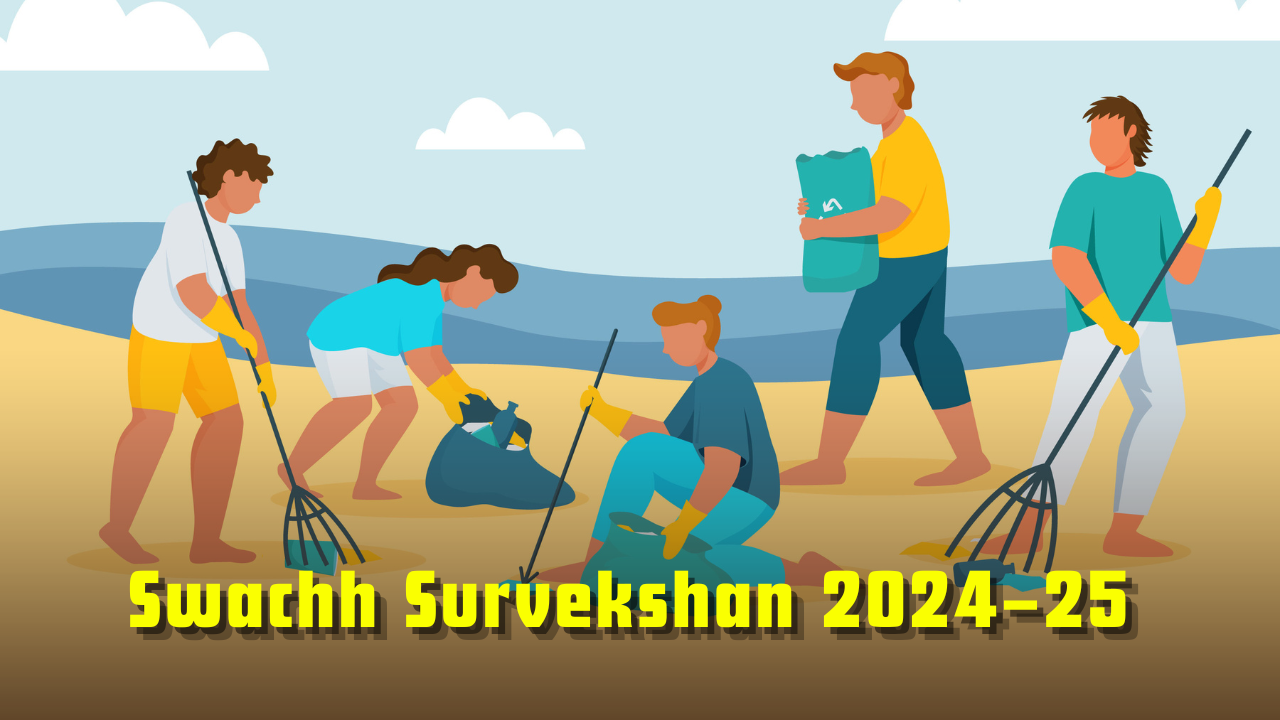Font size:
Print
Swachh Survekshan 2024–25
Takeaways from the Swachh Survekshan
Context: The ninth edition of Swachh Survekshan, touted as the world’s largest cleanliness survey, continues to be a crucial tool for policymakers and city managers in assessing urban sanitation and waste management across India.
What is Swachh Survekshan?
- Swachh Survekshan is an annual cleanliness survey launched in 2016 under the Swachh Bharat Mission–Urban (SBM-U) by the Ministry of Housing and Urban Affairs (MoHUA).
- It assesses the performance of cities in terms of sanitation, waste management, and citizen feedback.
- Supported by feedback from 140 million citizens and third-party verification, ensuring robust, reliable data. Provides policymakers and city managers a clear reality check on urban sanitation.
- Survey 2024–25 covered 4,589 cities, compared to only 73 cities in its first edition.
Key Highlights of Swachh Survekshan 2024–25
-
- Top Clean Cities (Million-plus Population): Ahmedabad, Bhopal, and Lucknow emerged as top performers after Indore and Surat were elevated to the newly created ‘Super Swachh League’ for consistent excellence in cleanliness.
-
Special Awardees:
-
- Best Ganga Town: Prayagraj, for exemplary riverfront and sanitation management.
- Best Cantonment Board: Secunderabad Cantonment
- Best SafaiMitra Surakshit Shehar: Visakhapatnam (GVMC), Jabalpur, Gorakhpur. For their efforts in ensuring the safety, dignity, and welfare of sanitation workers.
- Special Recognition: Uttar Pradesh Government, Prayagraj Mela Adhikari, and Prayagraj Municipal Corporation for successful waste management during Mahakumbh, which witnessed a footfall of 66 crore people.
Framework Innovations in 2024–25 Edition
- Revamped Evaluation Criteria: 10 new parameters tailored across five distinct population categories (<25k to >10 lakh).
- ‘One City, One Award’ Policy: To democratise recognition, 34 cities were awarded as Promising Swachh Shehars — one per State/UT — based on improvement and potential, irrespective of overall national rank.
- Circular Economy Focus: Emphasis on the 3Rs — Reduce, Reuse, Recycle — promoting “Waste to Wealth” innovation.
- Waste to Wealth Memento: President received a sarangi made from upcycled material as a symbol of sustainability.
Subscribe to our Youtube Channel for more Valuable Content – TheStudyias
Download the App to Subscribe to our Courses – Thestudyias
The Source’s Authority and Ownership of the Article is Claimed By THE STUDY IAS BY MANIKANT SINGH



